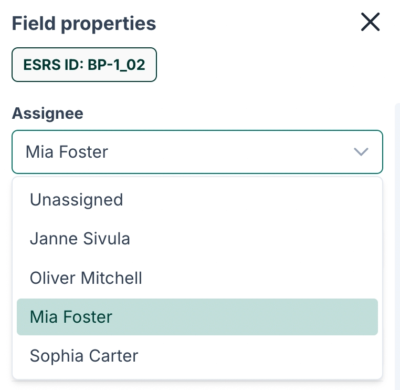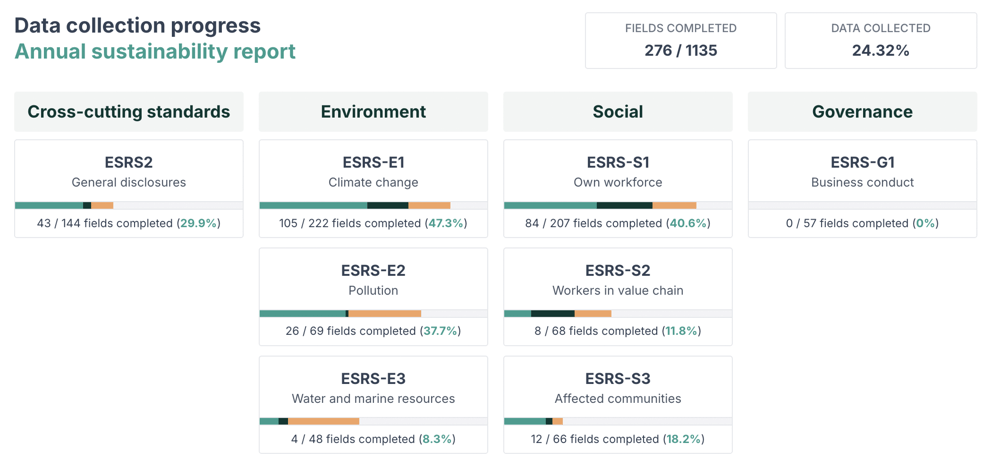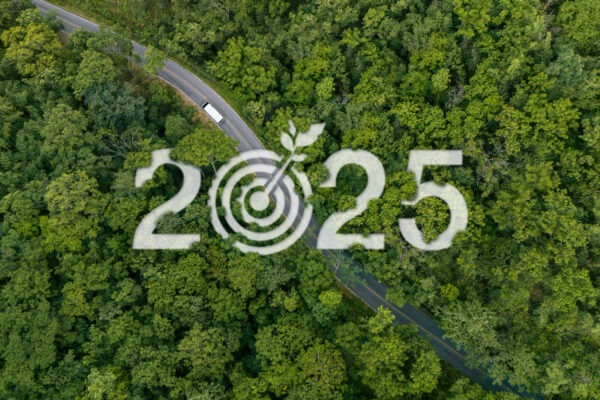Ultimate Guide to CSRD Reporting Software – Full Comparison 2025
CSRD Reporting Software – What you should be looking for 2025
Selecting the best CSRD reporting software for your company can be difficult. The Corporate Sustainability Reporting Directive (CSRD) is not just another compliance hurdle — it is the new global gold standard for ESG (Environmental, Social, and Governance) transparency. As sustainability becomes central to strategy, CSRD reporting transforms ESG from a marketing exercise into a verifiable, audited process tied directly to company performance and reputation.
This guide will walk you through everything you need to know about how a CSRD reporting software can make your life easier. We go through from legal requirements to the best CSRD software tools available in 2025. Whether you’re a sustainability manager, compliance officer, or executive, you’ll discover practical steps, real case examples, and a software comparison to help your company lead — not lag — in the era of responsible business.
Quick Recap: What Is CSRD and Why It Matters for Your Software Stack
The Corporate Sustainability Reporting Directive (CSRD) is the EU’s updated ESG reporting framework, replacing the NFRD. It requires a lot of companies — including many outside the EU — to report on sustainability using standardized formats and the new European Sustainability Reporting Standards (ESRS).
The key shift? Auditable, detailed, and digital ESG data is no longer optional. You’ll need to:
-
Report based on double materiality (impact and financial risk)
-
Cover all ESG pillars in detail
-
Tag data digitally for machine-readability
-
Be assurance-ready for third-party audits
This means spreadsheets and scattered systems are no longer enough. You need a CSRD reporting software solution that simplifies data collection, automates compliance with ESRS, and helps you stay ready for ever-evolving regulatory demands.
Next up: what to look for in a CSRD reporting software solution, and how to choose the right one for your company.
How to Choose the Right CSRD Reporting Software (Key Features to Look For)
Choosing the right CSRD reporting software is a strategic decision. You need more than a database — you need a platform that helps you collect, structure, validate, and present data that meets auditable CSRD requirements.
Here are the most important features to look for:
1. Built-In Support for ESRS
Your software should natively support European Sustainability Reporting Standards (ESRS) — no complicated workarounds or “DIY” mapping. Look for AI-assisted validation, pre-built templates, and continuous updates aligned with the latest ESRS versions.
2. Fast Onboarding & Import from Existing ESG Reports
You’ve already done work. Your CSRD tool should help you leverage it. Platforms like Planmark let you import your past sustainability reports, map existing data to ESRS, and identify gaps — getting you started quickly without reinventing the wheel.
3. Collaboration & Task Management
CSRD compliance is a team sport. Your platform should include:
-
User roles and permissions
-
Task assignments and deadlines
-
Comments and approvals
-
Version control and documentation logs
This ensures smooth collaboration between sustainability, finance, HR, and legal teams — especially in larger organizations or multi-entity groups.
4. Real-Time Dashboards & CSRD Monitoring
You need visibility across departments, entities, and KPIs. Top CSRD software includes real-time dashboards, progress tracking, and alerts — helping you stay audit-ready year-round.
5. Audit-Ready Documentation
Ensure the software provides:
-
Automated audit trails
-
Approval flows
-
Evidence management
This makes your external assurance process significantly easier — and much less stressful.
6. AI-Assisted Reporting
Advanced platforms offer:
-
Validating ESRS disclosures
-
Automating data ingestion
-
Create documents for various communication purposes
This isn’t fluff — AI can save your team hundreds of hours and reduce human error.
7. Multi-Entity and Group-Level Reporting
If you operate internationally, the ability to consolidate data by country, subsidiary, or brand is essential. Choose a platform that allows localized ESRS reports but global oversight.
8. Regulatory Updates Included
The CSRD and ESRS evolve constantly. Avoid platforms that charge extra for each update. Top-tier tools, like Planmark, include continuous regulation tracking as part of the package.
💡 Pro Tip: Avoid platforms that only offer “ESG general” tools without full CSRD alignment. Many US-based ESG platforms still lack native ESRS support, which leads to workarounds and manual fixes.
9. Transparent & Affordable Pricing
While many CSRD platforms come with enterprise-level price tags, Planmark is designed to be accessible — especially for mid-sized companies and consultants managing multiple clients. You get full ESRS compliance, real-time dashboards, audit-ready features, and AI-assisted tools without paying tens of thousands per year.
See our transparent pricing here — no hidden fees, no upsells for updates.
CSRD Reporting Software Comparison: 2025 Edition
Not all ESG tools are created equal — and not all of them are truly CSRD-ready. Below is a side-by-side comparison of the most relevant CSRD software tools in 2025, focusing specifically on their ability to handle the unique requirements of ESRS, double materiality, and auditable documentation.
This list includes top CSRD compliance software solutions chosen for their features, usability, AI capabilities, and support levels.
Note: All tools listed support EU CSRD compliance and allow for structured environmental, social, and governance reporting.
Top CSRD Software Tools Compared
| Software Provider | Key Features (AI Capability) | Pricing | Best For |
| Planmark (https://planmark.fi) | Dedicated platform for ESG, CSRD and VSME Reporting, and ESG Data Collection and Management. Full ESRS compliance, robust AI guidance, unlimited users, collaboration, versioning. | Starting from 399€/month | Mid‑sized – Large organisations, consultants. Companies searching for big features and affordable pricing |
| Pulsora (https://www.pulsora.com/) | Comprehensive CSRD suite, emissions tracking, automated compliance | Enterprise pricing | Large organizations seeking full coverage |
| Dcycle (https://www.dcycle.io/) | Auto ESG data collection, data normalization, custom reporting forms | Not disclosed | Businesses moving from spreadsheets to automation |
| Workiva (https://www.workiva.com) | Integrated ESG + financial reporting, audit trail, KPI automation | Medium–high (enterprise tier) | Enterprises needing combined financial+ESG reports |
| Prophix One™ (https://www.prophix.com/) | Financial Reporting software. ESG planning and analytics, budgeting, predictive insights | Not disclosed | Organizations needing ESG linked to financial planning |
| Position Green (https://www.positiongreen.com/) | ESG monitoring, materiality assessments, stakeholder engagement | Not disclosed | Sustainability teams emphasizing engagement |
| Sphera (https://sphera.com/) | Risk-focused ESG management, GHG accounting, comprehensive analytics | Enterprise pricing | Large corporates with focus on risk compliance |
| Aplanet (https://aplanet.org/) | ESG reporting platform with carbon management capabilities | Not disclosed | Organizations needing ESG + carbon footprint tools |
| Footprint Intelligence (https://www.footprint-intelligence.com/) | AI‑powered data integration, double materiality, Scope 1–3 GHG, audit‑ready | Affordable tier | Digital‑first companies needing rapid, AI-enabled CSRD setup |
| Daato (https://www.daato.net/) | Automated data gathering, GHG accounting, one‑click audit‑ready reporting | Not disclosed | Companies prioritizing automation in CSRD workflow |
| Coolset (https://www.coolset.com/) | Emissions management, CSRD compliance, AI-reporting | Custom pricing | Startups and SMEs seeking cost‑effective CSRD solution |
Now, a bit more details on each CSRD Reporting Software providers in this list:
Pulsora
Pulsora targets large enterprises with a full-featured sustainability suite designed to systematize CSRD data collection and compliance processes. Its platform centralizes ESG metrics—including Scope 1–3 emissions—automates ESRS validations, version control, and collaboration across decentralized teams. Built-in data quality rules, XBRL export, and audit-log functionality ensure users can confidently pass assurance procedures. Launched ahead of CSRD deadlines, Pulsora differentiates itself by enabling organizations to gather and house thousands of data points at scale, ensuring audit readiness without manual follow-ups. While pricing is enterprise-tier and custom, it’s ideal for large organizations with complex regulatory needs.
Dcycle
Dcycle offers a comprehensive, ISO-certified ESG platform that covers the entire lifecycle of CSRD reporting. From double-materiality assessments, gap analyses, and taxonomy alignment to centralized data collection and XBRL-ready outputs, the platform automates key processes. Its AI-driven data aggregation and real-time dashboards help companies monitor ESG progress and detect compliance gaps early. With security certifications and cloud-native design, Dcycle serves clients throughout Europe, and its recent €6 M Series A funding confirms its rapid growth and strong investor backing. Ideal for organizations migrating from spreadsheets to a centralized, machine-verified sustainability reporting workflow.
Workiva
Workiva is a marquee enterprise platform that combines ESG and financial reporting workflows in a single integrated system. With XBRL tagging, robust audit trails, multi-user collaboration, and assurance-ready capabilities, it is trusted by large, regulated firms. The platform seamlessly ties ESG metrics into financial documents and KPI dashboards, catering to organizations needing unified reporting across financial and sustainability domains. Though highly capable, Workiva’s complexity and enterprise pricing make it better suited for large firms already leveraging its broader governance and financial reporting toolset
Prophix One™
Prophix One™ blends ESG reporting into its core finance-planning platform—creating a unified environment for budgeting, forecasting, and sustainability disclosures. It enables teams to embed ESRS KPIs directly within financial models, leveraging predictive analytics to forecast ESG impacts and budget implications. This tight integration helps break down silos, aligning finance and sustainability teams within a shared dataset. Though its primary strength is financial planning, the addition of ESG-specific modules makes it appealing for CFO-led sustainability strategies. Pricing is custom, reflecting its hybrid finance–ESG positioning.
Position Green
Position Green is a Nordic-born ESG solution tailored for data integrity and stakeholder-centric workflows. It delivers structured materiality assessments, ongoing ESG performance tracking, and engagement tools to communicate sustainability efforts effectively. Backed by audit-ready version control and workflows, it suits organizations with strong regulatory or transparency needs—especially in Scandinavian markets. While broader in scope than niche CSRD platforms, its emphasis on stakeholder alignment and data quality management makes it a reliable choice for mid to large organizations focused on governance and stakeholder reporting.
Sphera
Sphera delivers a robust EHS and ESG solution for enterprises seeking to embed sustainability deeply within risk management processes. Its platform includes comprehensive carbon accounting, risk profiling, compliance checklists, and performance dashboards—all aligned with ESRS and external standards. Built for scalability, Sphera suits industries with high environmental impact or regulatory scrutiny, supported by powerful analytics and customizable reporting. Its enterprise-grade architecture supports global rollouts but comes with enterprise-level pricing and complexity, making it most suitable for large multinational firms.
Aplanet
Aplanet provides an all-in-one ESG platform combining ESRS-compliant reporting, carbon footprint measurement, supplier assessments, and impact analysis. It guides users through indicator selection, automated data collection, template-based reporting, and XBRL exports. The carbon module enables calculation of corporate and product footprints while managing supplier-level impact. Its modular architecture allows flexibility—clients choose ESG reporting alone or add carbon and value-chain modules. Aplanet is well-positioned for companies seeking one scalable platform to support both regulatory compliance and proactive ESG strategy.
Footprint Intelligence
Footprint Intelligence blends ESG, carbon accounting, and AI-driven reporting into a single platform. Designed to accelerate CSRD compliance, it leverages AI to automate data integration, ESRS alignment, and report creation. The platform supports Scope 1–3 emissions, double-materiality, and decarbonization planning. It also offers benchmarks, stakeholder engagement tools, and exportable, branded reports. Security certifications (e.g., ISO, SOC) and enterprise integrations (AWS, Couchbase) ensure data integrity. Footprint targets mid-sized and digital-first companies wanting quick implementation, cost savings, and strategic sustainability insights.
Daato
Daato focuses on CSRD reporting with emphasis on audit workflows and XBRL deliverables. Its platform covers ESG data collection and carbon accounting and invites certified auditors directly into the system for review, thanks to four-eyes approval, access rights, and embedded audit logs. Daato is ideal for companies needing integrated assurance and audit transparency without external coordination. The tool supports materiality assessments and value-chain reporting, making it suitable for regulatory-driven environments, though detailed pricing requires inquiry.
Coolset
Coolset helps mid-market enterprises transition from fragmented spreadsheets to polished, audit-ready sustainability reporting. It offers structured workflows—from stakeholder engagement and materiality assessment to ESRS-aligned templates and XBRL-ready outputs. The platform includes automated data capture, document attachment, collaboration features, and version control. Originating in Amsterdam, it positions itself as an efficient and scalable CSRD solution for SMEs and consultants. Pricing is custom, based on modules and support level—but is considered approachable for mid-market needs.
Planmark
Planmark delivers the same core functionalities as leading enterprise tools like Workiva and Microsoft — but with a much simpler UI, faster onboarding, and up to 90% lower pricing. Starting at just €799/month, Planmark includes unlimited users, AI-assisted ESRS compliance, audit-ready outputs, and full version control — all built with clarity and speed in mind.
Where traditional platforms can feel bloated and over-engineered, Planmark focuses on what sustainability and compliance teams really need: guided workflows, automation where it matters, and transparency throughout the reporting process. Built by CSRD experts, it’s ideal for medium-sized companies, in-house ESG teams, and consultants looking for a scalable yet affordable solution.
Unlike some platforms that hide features behind custom quotes or require months-long onboarding, Planmark is ready to go out of the box, with live support and clear documentation. If you’re looking for enterprise-grade compliance without the enterprise-grade price tag, Planmark is your competitive advantage.
Key Insights from the Comparison
-
According our customers, Planmark CSRD Suite stands out for its simplicity, built-in ESRS guidance, and real-time compliance tracking — ideal for companies looking for lean, audit-ready reporting without needing a full ESG consulting team.
-
Workiva ESG is a strong contender for large corporations already using integrated GRC or financial platforms, but can be overkill (and overpriced) for smaller or mid-sized firms.
-
Envoria and Position Green offer regional strengths (especially in the EU and Nordics), while Datamaran leans heavily into AI for risk assessment and large-scale enterprise ESG initiatives.
-
Cority ESG brings industrial expertise, particularly for companies prioritizing environmental reporting software for CSRD, though it lacks some of the new ESRS-native features.
Choosing the Best CSRD Reporting Software for Your Organization
If your company is navigating CSRD compliance for the first time, ask yourself:
-
Do we need quick wins or deep customisation?
-
Will we manage reporting in-house or rely on external advisors?
-
How many entities, subsidiaries, or countries are involved?
-
Is double materiality already mapped — or do we need help?
For many organizations, a lightweight, CSRD-native tool like Planmark is ideal. It provides everything needed for compliance — without bloated features or outdated legacy systems.
Next Step: Want a free walkthrough of a real CSRD software solution? [Book a demo with Planmark]
How to Implement CSRD Reporting (Step-by-Step Strategy)
You’ve chosen your CSRD reporting software. Now what?
Here’s a clear, actionable roadmap to implement CSRD reporting — from scoping to submitting your first compliant report.
Step 1: Confirm Your CSRD Obligations
Start by checking:
-
Your company size and location (EU or non-EU)
-
Whether you’re part of a listed group
-
When your CSRD deadline hits (many start from FY2024 or FY2025)
Pro Tip: Non-EU companies with EU subsidiaries must often comply too — use your csrd management software to tag entities and track local vs. group-level reporting.
Step 2: Run a Double Materiality Assessment
Double materiality is the backbone of CSRD. You’ll need to assess:
-
Impact materiality: How your company affects society and the environment
-
Financial materiality: How sustainability risks affect your financial outlook
Your CSRD software should guide you through stakeholder mapping, survey tools, and visual materiality matrices. Avoid trying to run this via spreadsheets — it’s audit-sensitive and time-intensive.
Step 3: Import Existing Sustainability Data
Leverage what you’ve already done. A Modern csrd software tool should let you import:
-
Past GRI or SASB reports
-
Carbon accounting tools
-
DEI tracking from HR systems
-
Financials from your ERP
Platforms like Planmark even help you automatically ingest this data to ESRS fields and highlight what’s missing. This feature alone saves hundreds of working hours.
Step 4: Assign Roles and Set Up Collaboration
As we all know, CSRD isn’t owned by just one department — it’s a cross-functional effort. Use the task and workflow tools in your software to:
- Decentralize data collection across the organization’s various entities
-
Assign owners to each disclosure
-
Track deadlines and approvals
-
Collaborate across departments with full version history

Easily assign tasks to any team member.
Step 5: Begin ESG Data Collection and Monitoring
Set up automated or manual data feeds for:
-
Carbon emissions (Scope 1, 2, and 3)
-
Gender equality and diversity metrics
-
Water use, energy efficiency, governance structures
Use real-time dashboards in your CSRD software to monitor completion status and compliance gaps.

Step 6: Generate Your CSRD Report
Using your chosen csrd reporting software, compile your disclosures into an ESRS-compliant report, including:
-
Mandatory and sector-specific indicators
-
Narrative sections (some platforms offer AI assistance here)
-
Digital tagging for machine readability (XBRL)
Make sure it’s designed for clarity and transparency. Bonus if your platform helps with formatting and publishing.
Step 7: Get Assurance-Ready
CSRD reports require limited assurance now, and reasonable assurance later. Your software should:
-
Provide an audit trail for all inputs
-
Allow for comment logs and evidence uploads
-
Create assurance checklists by ESRS section
Final Tip: Start Small, Scale Smart
You don’t need to solve everything in year one. CSRD is a journey — and the right csrd software tool helps you grow from a basic report to a benchmark-setting sustainability leader. All the data is now in a secure place and easily manageable.
The Role of AI in CSRD Reporting: From Overwhelm to Automation
Let’s be honest: CSRD reporting is complex. Hundreds of mandatory data points. Double materiality. ESG narratives. Third-party assurance. Sound overwhelming? That’s where AI-powered CSRD software changes everything.
Here’s how smart platforms use artificial intelligence to make CSRD compliance faster, more accurate, and far less stressful:
1. AI-Assisted Tagging to ESRS Standards
Instead of manually mapping each KPI to ESRS disclosure points, Planmark uses AI-assisted suggestions to help you find the most relevant matches — quickly and accurately. You stay in control, but the system highlights the likely tags based on your uploaded data and previous reporting patterns.
2. Natural Language Generation for ESG Narratives
Need to write qualitative disclosures about policies, processes, and risks? AI can draft first versions based on your uploaded documentation — from HR policies to environmental strategies. You just add in your insights and details.
You retain full editorial control, but save time getting started with high-quality drafts tailored to each ESRS topic. This really saves your valuable time for more valuable tasks.
3. Smart Compliance Scoring & ESG Coverage Analysis
AI doesn’t just collect data — it reads your responses across the ESRS framework and gives a compliance readiness score from 0 to 100 for each section.
This lets you instantly see:
-
How well your answers match ESRS expectations
-
Where you have strong coverage
-
Which areas need more detail or documentation
⚡ With clear scoring and visual breakdowns, your team can focus effort where it matters most — and move from reactive compliance to confident, proactive ESG reporting.
4. Learning From Other Reports (Securely)
Some platforms use AI trained on thousands of anonymized sustainability reports. This lets them recommend:
-
Disclosure phrasing that passes audits
-
Metrics used by your peers
-
Common mistakes to avoid
Think of it as having a CSRD-savvy assistant who’s read every ESG report ever published.
5. Secure Automation Without the Bloat
Importantly, AI features in leading CSRD compliance software are focused — they’re not trying to manage photos or marketing copy (unlike bloated ESG suites with DAM features you’ll never use).
Planmark, for example, uses AI only where it matters:
-
Mapping your existing data
-
Speeding up tagging and report generation
-
Monitoring regulation changes
-
Offering quality suggestions — without taking control away
Bottom line: AI won’t replace your ESG team — but it will turn 100 hours of spreadsheet wrestling into 10 hours of strategic oversight.
Customer Testimonial: Kiilto on Choosing the Right CSRD Reporting Software
“When it came to CSRD reporting, our goal was to find a lightweight, user-friendly, and compliant solution. Planmark’s CSRD Reporting Software proved to be the right fit—flexible and well-aligned with our existing system infrastructure. The AI-powered guidance and built-in GRI mapping helped us better understand disclosure requirements and focus on the actual content. The collaboration with Planmark’s team was smooth from the start, and we appreciated the opportunity to contribute to the product’s development.”
– Laura, Kiilto
Customer CSRD Reporting Case Study: Manufacturing company
Challenge:
Our company had no standardized approach for sustainability reporting, and managing essential ESG data points according to the ESRS framework became a major undertaking. Excel was no longer sufficient. We also wanted to outsource the task of tracking standard updates and leverage AI due to limited internal resources. We were looking for a lightweight, easy-to-implement tool that could support the DMA process and help us produce a well-structured sustainability statement without unnecessary administrative burden.Solution:
Planmark provided an effective solution to support ESG data management and ensured our ESRS framework stays up to date. The system improved team collaboration and reduced manual workload. We were able to document all data points directly in the platform. While the system didn’t yet fully support the DMA process or automated sustainability statement generation for our needs, it significantly streamlined our overall reporting readiness.Benefits:
We now have access to an up-to-date and structured reporting framework, which made it easier to get started with ESRS compliance. The implementation process was smooth, and customer support was quick to respond. The AI-based review tool was especially helpful during our first reporting cycle. We also expect future benefits from AI-assisted document generation once the feature is available.Sustainability Director – Rapala.com
🔍 Key takeaways: Centralized data and collaborative workflows transformed compliance into a growth-focused ESG strategy.
Ready to Make CSRD Reporting Easy, Accurate, Collaborative, and Audit-Proof?
You don’t need an army of consultants or a year-long project to get CSRD-ready. With the right software, you can:
- Simplify double materiality
- Automate data collection and ESRS tagging
- Collaborate seamlessly across teams and departments
- Track your progress in real time
- Generate a credible, professional report — fast
Planmark CSRD Suite was built for companies that want to take control of their sustainability reporting — without complexity, silos, or spreadsheet chaos.
What You’ll Get with Planmark:
-
Built-in ESRS compliance and double materiality tools
-
AI-assisted data mapping and report generation
-
Task assignments, approval flows, and full version control
-
Real-time dashboards and compliance monitoring
-
Centralized workspace for sustainability, HR, finance, and legal teams
-
No bloat. No unnecessary features. Just the essentials — fast, clean, and collaborative.
Let’s make CSRD reporting the easiest part of your ESG strategy.


